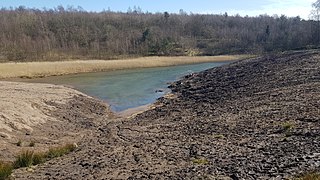 W
WTortona is a comune of Piemonte, in the Province of Alessandria, Italy. Tortona is sited on the right bank of the Scrivia between the plain of Marengo and the foothills of the Ligurian Apennines.
 W
WThe Alajuela Formation, originally Alhajuela Formation (Tau), is a Late Miocene geologic formation in the Panama Canal Zone of central Panama.
 W
WThe Angostura Formation is a Late Miocene geologic formation of the Borbón Basin in northwestern Ecuador.
 W
WThe Bahe Formation is a Late Miocene geological formation in Shaanxi, China. It has "a complex lithology of predominantly orange-yellow conglomerates, sandstones, tan-yellow sandy mudstones, and tan-red mudstones." The main fossil locality is in the Jiulaopo region on the left bank of the Bahe River in Lantian.
 W
WThe Bocas del Toro Group is a geologic group in Panama. It preserves fossils dating back to the Serravallian to Early Pleistocene period. The group comprises the Swan Cay, Isla Colón, Escudo de Veraguas, Cayo Agua, Shark Hole Point, Nancy Point and Valiente Formations.
 W
WThe Cercado Formation is a geologic group in Dominican Republic. The formation comprises siltstones, limestones, claystones, sandstones and conglomerates deposited in a shallow marine to reef environment. The Cercado Formation, unconformably overlying the Baitoa Formation, preserves bivalve, gastropod, decapod and coral fossils dating back to the Late Miocene to Early Pliocene period.
 W
WThe Cerro Azul Formation, in the Buenos Aires Province also described as Epecuén Formation, is a geological formation of Late Miocene age in the Colorado Basin of the Buenos Aires and La Pampa Provinces in northeastern Argentina.
 W
WThe Chagres Formation (Tc) is a geologic formation in the Colón Province of central Panama. The sandstones and siltstones were deposited in a shallow marine environment and preserve fossils dating back to the Middle to Late Miocene period.
 W
WThe Collón Curá Formation is a Middle Miocene fossiliferous geological formation of the southern Neuquén Basin in northwestern Patagonia and the western Cañadón Asfalto Basin of central Patagonia, Argentina. The formation crops out from the southern Neuquén Province, the western Río Negro Province to the northern Chubut Province.
 W
WThe Gatún Formation (Tg) is a geologic formation in the Colón and Panamá Provinces of central Panama. The formation crops out in and around the Panama Canal Zone. The coastal to marginally marine sandstone, siltstone, claystone, tuff and conglomerate formation dates to the latest Serravallian to Tortonian, from 12 to 8.5 Ma. It preserves many fossils, among others, megalodon teeth have been found in the formation.
 W
WThe Goliad Formation (Tg) is a geologic formation in Texas. It preserves fossils dating back to the Serravallian to earliest Pliocene stages of the Neogene period, including the gomphothere Blancotherium among many other fossil mammals, reptiles, birds and fish.
 W
WThe Gram Formation is a geological formation in Gram, Denmark. It preserves fossils dating from the Miocene period. The formation consists of three layers: the glauconite-rich, the Gram Clay, and the Gram sand. The sediments in the formation were deposited in an open marine depositional environment known as the Gram Sea.
 W
WThe Late Cenozoic Ice Age, or Antarctic Glaciation began 33.9 million years ago at the Eocene-Oligocene Boundary and is ongoing. It is Earth's current ice age or icehouse period. Its beginning is marked by the formation of the Antarctic ice sheets. The Late Cenozoic Ice Age gets its name due to the fact that it covers roughly the last half of Cenozoic era so far.
 W
WThe Letrero Formation is a Late Miocene geologic formation in south-central Ecuador. The formation comprises lacustrine sediments with strong fluvial clastic input and contains siltstones and fine-grained sandstones.
 W
WThe Santa Cruz Mudstone is a geologic formation in California. The siliceous organic mudstones of the formation were deposited in deep water and fluvial environments. The formation overlies the Santa Margarita Sandstone and is overlain by the Purisima Formation. The Santa Cruz Mudstone was formerly considered part of the Monterey Formation. The formation preserves bivalve and echinoid fossils as well as vertebrates of Parabalaenoptera baulinensis and Otodus megalodon. The formation dates back to the Late Miocene period.
 W
WThe Tuira Formation is a geologic formation in Panama. It preserves bivalve, gastropod and sponge fossils dating back to the Tortonian period, from 11 to 9.5 Ma.